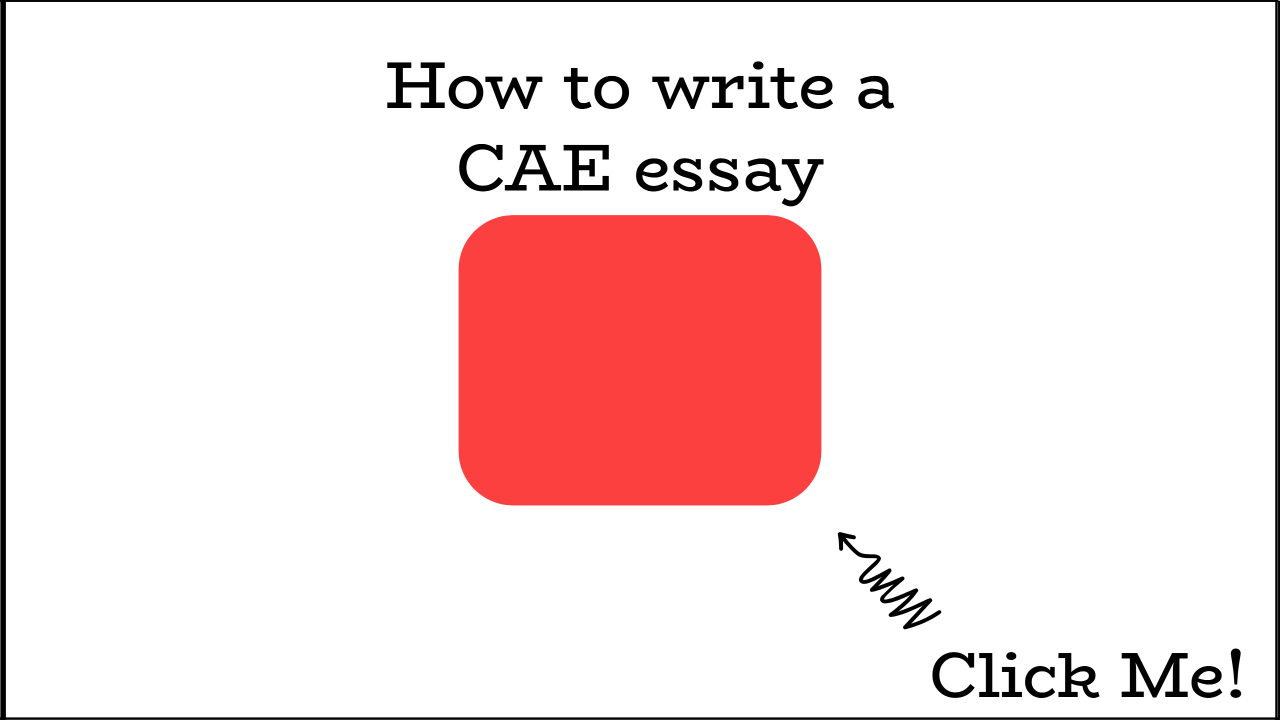Here’s a video I made to help you understand how to write a CAE essay.
It’s quite long - I wanted to answer ALL your questions about essays. In the unlikely event the video doesn’t tell you something you need to know, leave a comment!
You can see the slideshow I used here.
Click here for C1 essay examples.
If you don’t want to watch the video, here’s the brief version!
Writing a CAE Essay
Basics
You must write an essay. (In part 2 you get a choice, but the essay is always mandatory.)
You have about 45 minutes.
The tasks always look the same.
Don’t ‘lift’ too much from the question - use your own words.
Preparing
Do lots of mock exams.
Start early (mistakes in your writing take longest to fix). Months, not days!
Computer based - write on computer. Paper based, paper.
The more you practice the less you’ll need to worry about word count.
What Is an Essay?
It’s a text where you present an argument (and support it with reasons).
What’s the Difference Between an Essay and a Report?
Essays tend to be general while reports are more concrete. So you might get an essay like ‘Which are more important, trains or hospitals?’ A report might be like ‘How can we improve the train network in your country?’
Reports are quite business-y and have subheadings. They end in a recommendation.
What Is a Cambridge Essay?
Cambridge want to see that you can write an academic text in neutral/formal style, and be persuasive while having a good structure, using linking phrases etc.
Keep the reader in mind. Make sure you follow their instructions and that they can understand what your points are.
You don’t need to include a title. It’s okay if you do.
You have more access to a wider range of language if you have a negative point and a positive point.
Your essay doesn’t have to be factually accurate! Lie/make things up if it helps your essay!
Planning
Give yourself at least 5 minutes to plan your essay before you start writing. The more you invest in the planning stage the easier the actual writing will be.
Strong Introductions
The slideshow has examples of 3 easy-to-learn intro types:
A question
A quotation
A surprising fact
Keeping Interest
Keep the reader interested by using great vocabulary and introducing surprises.
Checking
Learn how to check your work to spot simple mistakes and places where you could improve the language you’ve used.
Random
They don’t care about your handwriting - as long as they can read it.
You can make some mistakes as long as the reader can understand what you are saying.
American vs British English - either is fine.

